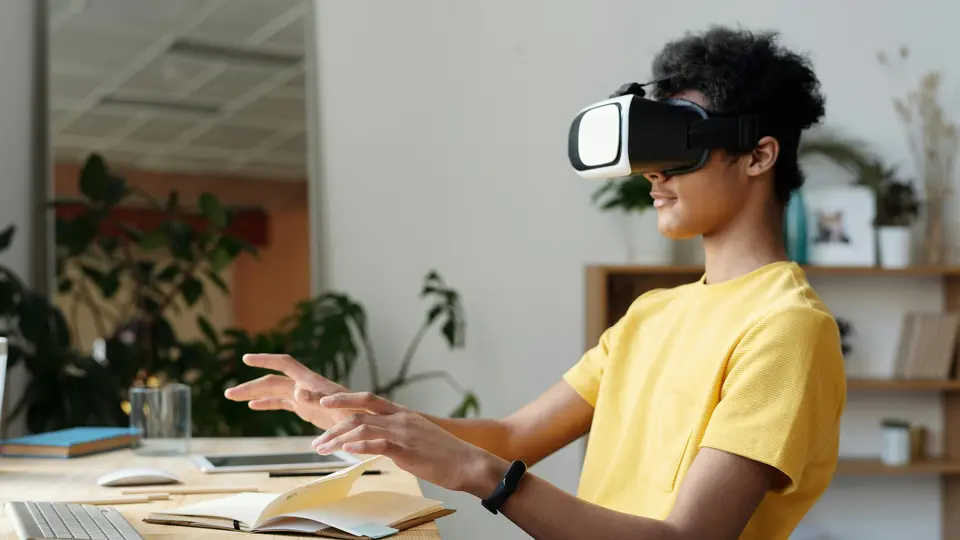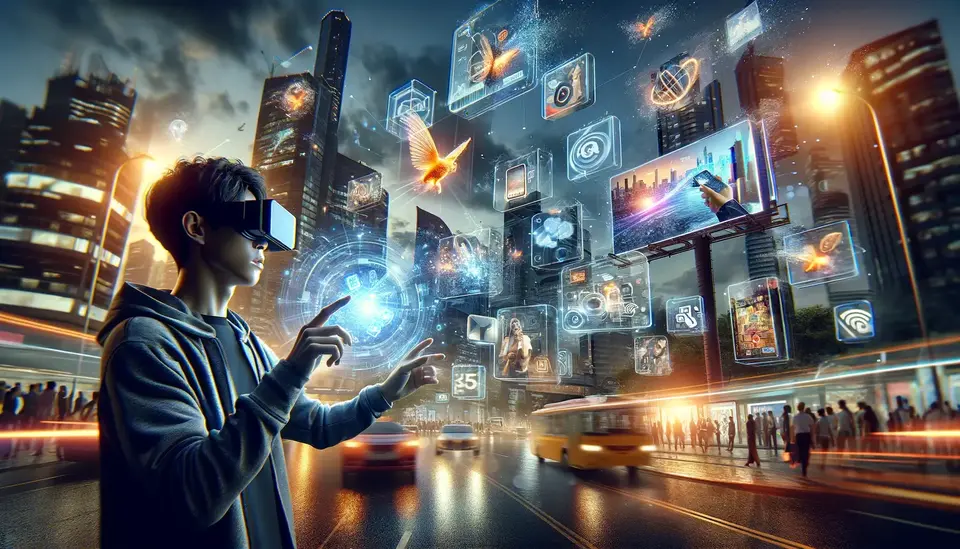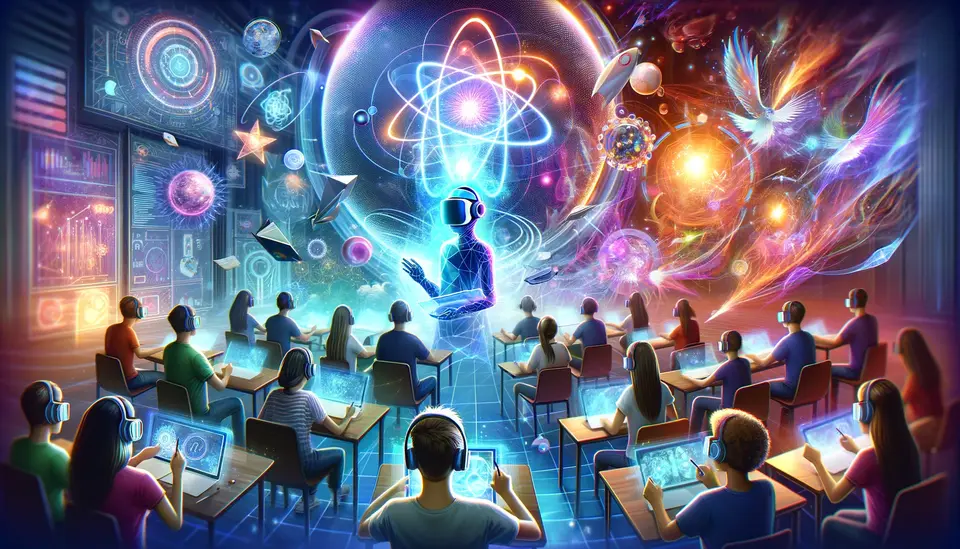Benefits of Virtual Reality for Education
Posted on April 15, 2024 6 minutes 1129 words
Table of contents
Introduction
Virtual Reality (VR) technology, once a futuristic dream, has now become an accessible and transformative tool in various sectors, especially in education. Integrating VR into educational settings offers a novel approach to learning and teaching, making the process not only more engaging but also more effective. This blog post aims to explore the myriad benefits that VR brings to education, emphasizing its potential to revolutionize how educators teach and students learn.
As we delve into this technological innovation, it’s crucial to understand that the implementation of VR in education goes beyond mere novelty. It’s about leveraging immersive experiences to enhance educational outcomes, making learning a more captivating and interactive process. By the end of this post, educators, policymakers, and EdTech enthusiasts will have a comprehensive understanding of VR’s impact on education and why it’s worth the investment.
Understanding Virtual Reality in Education
At its core, Virtual Reality is a simulated experience that can either replicate an environment or create an entirely new world. Using VR headsets and sometimes additional equipment, users can immerse themselves in a virtual environment, interacting with 3D worlds as if they were real. In educational settings, VR’s application ranges from virtual field trips and simulations to interactive lessons that bring complex subjects to life.
The concept of using VR for educational purposes isn’t new; however, it has gained significant momentum with advancements in technology and accessibility. Early applications were limited by high costs and bulky equipment, but today’s VR technology is more affordable and user-friendly, opening up endless possibilities for its application in education.
By combining visual, auditory, and sometimes even tactile feedback, VR creates immersive learning environments that can significantly enhance educational experiences. This immersive aspect is particularly beneficial for subjects that require hands-on experience or a deep understanding of spatial relationships, such as science, history, and engineering.
In the next sections, we will explore the specific benefits of VR in education, demonstrating how this technology not only supports various learning styles but also introduces an unprecedented level of engagement and interactivity into the educational process.
Enhancing Learning Experiences
Immersive Learning
One of the most compelling advantages of VR in education is its ability to create highly immersive learning environments. Unlike traditional learning methods that rely on passive observation, VR engages learners actively, placing them in the center of the experience. For example, instead of merely reading about historical events, students can virtually travel to historical sites, experiencing the context and complexity of events first-hand. Science students can conduct experiments in a safe, controlled virtual laboratory, allowing for trial and error without the risks associated with real-life experiments.
This immersion proves particularly beneficial for complex subjects that benefit from experiential learning. By visualizing and interacting with three-dimensional models, students can grasp abstract concepts more concretely. For instance, exploring the intricate structures of the human body in a biology class or understanding architectural principles through virtual tours of famous buildings.
Accessibility
VR also plays a crucial role in making education more accessible. Students with disabilities or those who require specific learning adaptations find that VR can cater to their needs more flexibly. Visual or auditory impairments, for example, can be accommodated within VR environments through tailored experiences that enhance learning without the limitations of the physical classroom.
Moreover, VR eliminates geographical barriers, offering students from remote or underprivileged areas the opportunity to explore worlds beyond their immediate surroundings. Virtual field trips to museums, historical sites, and even other planets are now within reach, providing equal learning opportunities to all students, regardless of their socio-economic background.
Benefits of VR for Education
The immersive learning experiences and increased accessibility facilitated by VR are just the tip of the iceberg. Let’s explore further benefits that VR technology offers to the educational landscape.
Improved Engagement and Motivation
VR’s interactive nature fosters a more engaging learning environment, capturing students’ attention and retaining their interest in the subject matter. This engagement is crucial for motivation, as students are more likely to pursue learning with enthusiasm when they find the process enjoyable and stimulating. The novelty and excitement of VR experiences can transform even the most mundane topics into captivating adventures, encouraging continuous learning and exploration.
Facilitating Active Learning
Active learning through VR enables students to apply concepts in virtual scenarios, reinforcing their understanding and retention of information. This hands-on approach supports problem-solving and critical thinking skills, as learners navigate through challenges and tasks in the VR environment. By actively participating in their learning, students develop a deeper understanding of the subject matter, making the educational process more effective and memorable.
Accessibility and Inclusivity
VR’s adaptability extends to creating inclusive learning environments that cater to diverse learning styles and needs. Whether it’s providing visual aids for abstract concepts or offering multiple ways to interact with content, VR ensures that learning materials are accessible to a wider audience. This inclusivity not only supports students with specific learning preferences but also promotes a more equitable educational system where every learner has the tools to succeed.
Customization and Flexibility
The customizable nature of VR environments allows for the creation of personalized learning experiences. Educators can tailor content to match their teaching objectives and address the unique needs of their students. This flexibility ensures that learning paths can be adjusted to suit different paces and styles, accommodating individual learning curves and maximizing the potential for success.
Enhanced Collaboration
Finally, VR fosters collaboration among students and between students and teachers. Virtual environments can be designed for group activities, encouraging teamwork and communication skills. This collaborative aspect of VR learning not only enriches the educational experience but also prepares students for the collaborative nature of the modern workplace.
Challenges and Considerations
While the benefits of VR in education are vast, it’s essential to acknowledge the challenges in implementing this technology. These include the initial costs of VR equipment and software, the need for technical support and training, and ensuring content quality and relevance. Addressing these challenges requires thoughtful planning and investment, but the potential rewards for educational outcomes are significant.
Future Directions
The future of VR in education holds exciting possibilities, from advancements in haptic feedback technology that enhances the tactile experience to the integration of artificial intelligence for personalized learning journeys. As technology evolves, so too will the ways in which we can harness it to enrich education.
Closing
Virtual Reality has opened up new horizons for education, offering immersive, accessible, and engaging learning experiences. By embracing this technology, educators can provide students with innovative tools that not only enhance educational outcomes but also prepare them for a future where technology and learning go hand in hand. The journey into VR in education is just beginning, and the possibilities are as limitless as our imagination.








